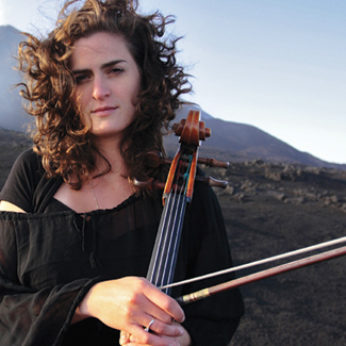Composer: Antonin Dvořák (b. 1841 - d. 1904)
Performance date: 04/07/2016
Venue: Bantry Library
Composition Year: 1891
Duration: 00:30:02
Recording Engineer: Richard McCullough, RTÉ lyric fm
Instrumentation: vn, vc, pf
Instrumentation Category:Piano Trio
Artists:
Cédric Pescia -
[piano]
Monika Leskovar -
[cello]
Nurit Stark -
[violin]

Antonín Dvorák completed the E
minor Piano Trio on 12 February
1891, shortly before travelling to
for a two-year stint as director of a newly founded conservatory in
its name from dumka (dumky is the plural), a Ukrainian word
meaning meditation or brooding. The dumka was a Slavonic song form that Dvorák utilised in a number of his compositions. His approach
to the form, which was quite distinctive, emphasized contrast and called for a
sectional layout in which a pensive, minor-key lament alternated with relaxed,
dance-like material in the major.
Dvorák took up this novel formal conception as
a way of freeing himself from the accepted sonata-form structures and the
sometimes overbearing influence of Brahms, who had helped the younger composer
to become known outside Prague. But Dvorák’s natural
instinct had always been to champion all things Czech, and his great
achievement in this and many other works of this period was to create music of
universal appeal while retaining his special Czech identity. Russian composers
led by Musorgsky had initiated a similar attempt to break away from the
stranglehold of German music and the rules of German composition; French
composers were also looking to recreate their own tradition of composition.
The idea of creating a six-movement piano trio in
which all six movements were based on the dumka structure was a bold one, but Dvorák’s inventiveness was more than equal to the challenge.
Indeed, few of his works exhibit as clearly his exceptional skill at fusing
contrasting material into a unified line of action. Part of what makes the Dumky
so successful is Dvorák’s use of a
different key in each movement to ensure variety of colour and mood. The result
is a suite-like cycle, with movements in E minor, C sharp minor, A major, D
minor, E flat and C minor, which is neither end- nor beginning-oriented, but
cumulative in effect. Coherence is not sacrificed, however, because the
similarity in structure between the various movements develops its own kind of
formal unity, replacing what had been lost with the abandonment of a more
conventional key scheme.
The first three dumky
are linked together almost without a break. So, despite the composer, it is
still possible to feel that it is a four-movement work – the first of the many
deliciously confusing events in this work. The first dumka contrasts a very slow self-absorbed opening section with a
shorter but lively dance, whose return brings the movement to an abrupt close.
The slow theme of the second dumka is
a typical Dvorák heart-on-sleeve romance. It is again
contrasted with an intoxicating, headlong dance. The radiant opening of the
third dumka is followed by another
gorgeous vocal melody first heard in the piano, which treads the exquisite
borderline of sentimentality, but whose transformations take flight. The vivace contrast is quite short, as if
the composer cannot bear to be parted from his latest creation. The fourth dumka calls up a gentle march to break
away from the mood of nostalgia. It is interspersed with a bright allegretto, ornamented by bird song from
the violin. The fifth movement is the most extrovert, dominated by a flashy
main theme, with the slow sections more like a series of melodramatic
hesitations than a new melody. The finale opens with a dramatic Lento maestoso made up of brief
tension-filled perorations and interjections, followed by the hectic vivace. This subsides again and, with
great mastery, the composer finds a dozen ways to keep us on the edge of our
seats until the last sudden explosion.
The first performance of the Dumky Trio took
place in
on 11 April 1891. Dvorák, showing his
versatility as a performer, was the pianist; the cellist was Hanus Wihan, for
whom Dvo?ák would soon write the Cello Concerto in
B minor, and the violinist was Ferdinand Lachner. The three subsequently toured
the work through
Copyright © 2024 West Cork Music. All rights reserved.
Designed and developed by Matrix Internet